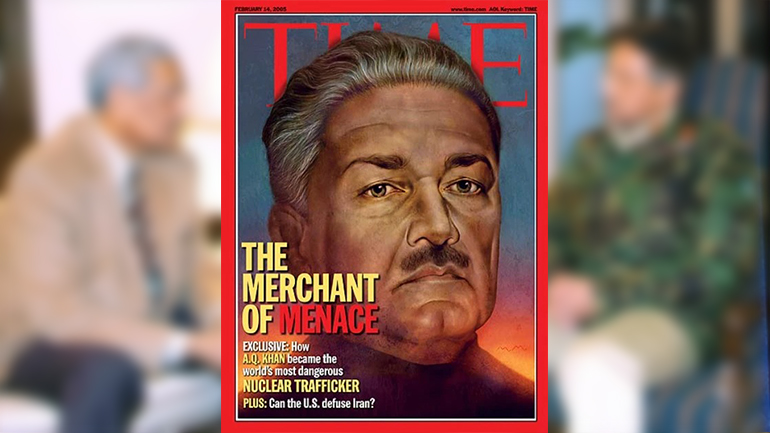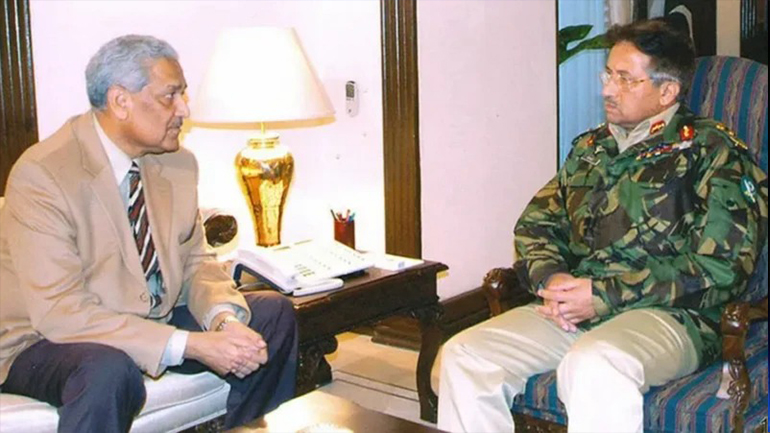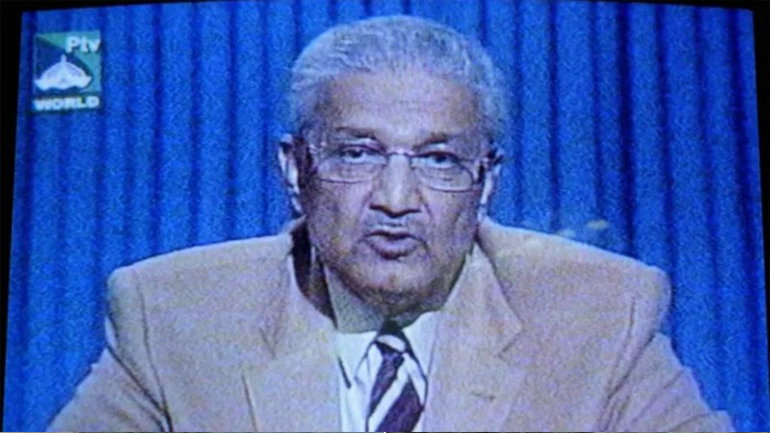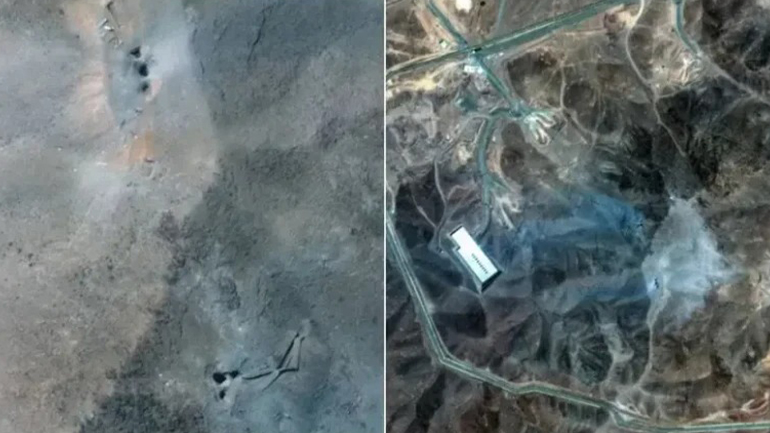

On February 4, 2004, the people of Pakistan witnessed a scene on their television screens that was nothing short of an explosion — an explosion whose echoes were heard not only across Pakistan but throughout the world. This shocking revelation came from none other than Dr. Abdul Qadeer Khan, the chief architect of Pakistan's nuclear program, when he appeared on state television and publicly confessed that he had illegally transferred nuclear secrets to other countries without the knowledge of the Pakistani government. Wearing a suit and tie, Dr. A.Q. Khan, in simple English, admitted: “Investigations have established that there were many reported activities, and they were initiated at my behest in the beginning.” He further said: “In interviews with concerned government officials, I was confronted with evidence and findings, and I voluntarily accepted that most of it was true and accurate.”
“My dear brothers and sisters, I have chosen to appear before you to express my deep regret and offer an unconditional apology. I also want to make it clear that the government never authorized any of these activities.” Following this statement, then-President General Pervez Musharraf placed Dr. Khan under house arrest, cutting off all his communication with the outside world. Yet, both Pakistan and Dr. Qadeer remained in international headlines. On February 14, 2004, Time Magazine featured Dr. Khan on its cover with the title "Merchant of Menace." Similar headlines appeared across the world. But in Pakistan, serious questions were raised about how such a senior nuclear scientist could be involved in proliferating atomic technology for so long without the knowledge of the military or intelligence agencies. Four years later, in an interview with The Guardian, Dr. A.Q. Khan claimed that the confession he read was handed to him, implying that he was coerced into taking the blame. It is worth noting that Dr. Khan was accused of selling nuclear secrets to Iran, North Korea, and Libya through a covert network, thereby assisting their nuclear programs.

Time magazine featured Dr. Qadeer on its cover on February 14, 2004, with the headline, "Merchant of Men."
The story had actually begun back in the 1990s. British intelligence agencies and the CIA had managed to infiltrate Dr. Abdul Qadeer Khan’s secret nuclear network by the late 1990s. These agencies conducted multiple operations and even managed to place one of their officers within the network. According to the same report, with the help of various sources and the British Intelligence Headquarters, they uncovered details about Dr. Khan’s buyers, his use of front companies, financial transactions, and a web of laboratories supporting the illicit trade. As it became clear that Dr. Khan had established an international network supplying components for nuclear weapons, the UK Joint Intelligence Committee began expressing serious concerns about the issue as early as 2000. However, the most crucial breakthrough came in December 2003, when officers from the CIA and British MI6 obtained key evidence from Libyan authorities, who were in the process of abandoning their nuclear program. Libya handed over brown envelopes containing nuclear weapon designs, and those documents became a smoking gun. According to intelligence, in addition to the designs, key nuclear components had also been supplied by Dr. Abdul Qadeer Khan, Pakistan’s top nuclear scientist. This revelation provided the United States with strong justification to pressure Pakistan to take action against Dr. Khan.
In March 2005, Pakistan’s then Information Minister Sheikh Rashid Ahmed admitted that Dr. Abdul Qadeer Khan had provided nuclear technology to Iran, but claimed that the government did not know about these dealings. This was the first time a representative of the Pakistani government made such an acknowledgment. In a telephone interview with the Associated Press, Sheikh Rashid said, “Dr. Abdul Qadeer gave Iran some centrifuges,” and added, “He helped Iran in his capacity, and the government of Pakistan had nothing to do with it.” Iran’s Natanz facility, which became a key site for its centrifuge program, appears to have been largely based on the designs and materials initially supplied by Dr. Khan’s nuclear network. According to the same report, during one meeting, representatives of Dr. Khan provided Iranian officials with a list of materials and components needed for building a nuclear program — including their prices — and the Iranian side was free to place orders accordingly. In response to these allegations, a report published by Al Jazeera on December 22, 2004, stated that Iran’s Foreign Ministry acknowledged purchasing materials from certain dealers, but added, “We don’t know where the material came from.” Iran further asserted that its nuclear program was peaceful and that it had no interest in developing nuclear weapons. It is worth noting that Natanz, located about 250 kilometers south of Tehran, is a key uranium enrichment site in Iran. It has operated since February 2007, allegedly in violation of United Nations Security Council resolutions, and was recently targeted in Israeli airstrikes. While the current status of the facility is unclear, U.S. President Donald Trump and Israel have both claimed that Iran’s ability to produce a nuclear bomb has been eliminated. However, before those attacks, intelligence reports indicated that the Natanz facility consisted of three large underground buildings, capable of operating 50,000 centrifuges. At the time of the most recent U.S. and Israeli attacks, around 14,000 centrifuges had been installed, out of which approximately 11,000 were operational. Natanz has also been targeted in the past by cyberattacks and acts of sabotage, which are widely believed to have been joint operations by the United States and Israel.

The then President General Pervez Musharraf placed Dr. Abdul Qadeer Khan under house arrest in his own home and cut off his contact with the outside world.
The then head of the International Atomic Energy Agency (IAEA), Mohamed ElBaradei, once pointed a direct finger at Dr. Abdul Qadeer Khan, stating that he was aware of nearly 30 companies in at least 30 countries being part of an illegal nuclear proliferation network allegedly led by Dr. Khan as its “CEO.” This was a serious allegation, and Dr. Khan continued to deny it until the end of his life, although he never clearly explained what had happened. In September 2004, ElBaradei responded to host Tim Sebastian’s pointed questions as follows:
Tim: Thirty countries, including some you hadn't previously known about?
ElBaradei: No, not all companies were aware they were involved in illegal smuggling. If you're exporting steel, if you're exporting magnets, these can have dual uses. So, they didn’t know that ultimately this material was ending up in Iran or Libya.
Tim: But what about the clients — Abdul Qadeer Khan’s clients, the countries buying from him?
ElBaradei: We’re still trying — along with many other intelligence agencies working with us — to identify whether any other clients existed. We haven't yet reached that point.
Tim: Why didn’t you speak directly to this man (Dr. Khan)?
ElBaradei: Pakistan did not allow us to speak to him.
Tim: What do you mean, "not allowed"? General Musharraf is on record as saying no one asked to question him.
ElBaradei: I think we would have been happy to question him, but...
Tim: Did you request to interrogate him?
ElBaradei: I believe we did.
Tim: But they say you didn’t, which is very unusual, isn’t it?
ElBaradei: I can’t say for sure. I believe we kept requesting to speak with him.
Tim: Can’t you tell me whether the IAEA formally requested to interview him?
ElBaradei: As far as I know, our people asked.
Tim: Isn’t it a serious gap if you didn’t?
ElBaradei: I can say today to my friends in Pakistan — if they permit, I would be happy to send a team tomorrow. Yes, it’s a serious gap, but...
Tim: Isn’t this the time to ask for that?
ElBaradei: As far as I know, Dr. Abdul Qadeer Khan has never spoken to any non-Pakistani, which is not ideal. It would be very beneficial for us to speak to him directly.
Tim: Syria? Saudi Arabia? Were they also clients?
ElBaradei: We’ve seen no indication of that. I mean, we have no evidence suggesting Syria or Saudi Arabia were clients. We sent a team to Syria to discuss their entire nuclear program. We found no signs. We act on every bit of information we receive, but in this case, we haven’t received anything concrete.
Tim: But in this case, it seems you weren’t proactive enough.
ElBaradei: Oh, we’re very proactive. But I can’t go knocking on every door saying, “Did you buy something from Dr. Abdul Qadeer Khan?” I need a lead, a source. We haven’t received a single report that another country bought from him. If we did, I assure you, we would act overnight.

Dr. Abdul Qadeer Khan admitted on state TV that he had illegally sold nuclear secrets to other countries, which the Pakistani government was unaware of, but he later retracted this statement.
Dr. Abdul Qadeer Khan remained under house arrest for only a short period. In 2012, he founded a political party called Tehreek-e-Tahafuz Pakistan (Movement for the Protection of Pakistan), which faced a crushing defeat in the elections, failing to win even a single seat. Around the same time, after years of silence, Dr. Khan gave interviews to several journalists in which he denied his earlier televised confession and rejected any involvement in illegal nuclear activities. In an interview with an international publication, he clearly stated that he had no involvement in any country’s atomic program except Pakistan's. Regarding Iran, he said: “How is it possible that Iran, which is a signatory of the NPT (Non-Proliferation Treaty) and has consistently maintained that it does not want to build a bomb, could do so with someone’s help?” He described the accusations as propaganda, similar to the disinformation spread about Iraq, and added: “Because Iran is a signatory of the NPT, the IAEA can inspect its nuclear program anytime. So, claiming that Iran is building a bomb is completely incorrect.” On the topic of North Korea’s nuclear capability, Dr. Khan stated that the country had been aligned with the China and Russia bloc for decades, and “did not need to rely on any other country to build a bomb.” Regarding the accusation that Libya was trying to build a nuclear bomb using the secrets and technology allegedly supplied by him, Dr. Khan’s reply was: “A country that can’t manufacture a bicycle, how could it possibly build a nuclear bomb?”
The official stance of the Pakistani state and government has consistently been that Dr. Abdul Qadeer Khan acted individually in attempting to assist Iran, which was considered an irresponsible act and had no connection to Pakistan’s official policy or state agenda. For nearly the past 25 years, Pakistan has maintained a consistent position that its nuclear program and missile technology are solely for its national defense, deterrence, and regional security, and that this technology would not be shared with any other country. Officials have also emphasized that this policy stems from a deep concern and desire that Pakistan does not want the recurring allegations of nuclear proliferation to be taken seriously or gain international traction. Such accusations, they say, are not in Pakistan’s interest in any way.
Dr. Mansoor, an expert in nuclear and defense affairs, is affiliated with the Australian National University in Canberra. He has conducted extensive research on the nuclear programs of Pakistan, India, and Iran. Explaining the difference between Pakistan’s and Iran’s nuclear programs, he says: “Pakistan never signed the NPT (Non-Proliferation Treaty), while Iran did — and that is a major difference. Because Iran is a signatory, people question its actions: if it claims its program is peaceful, then why does it need to enrich so much uranium?” Pakistan developed its nuclear fuel cycle capabilities outside the safeguards of the International Atomic Energy Agency (IAEA), so no one could raise such accusations. Pakistan was not an NPT signatory, and it developed its capability indigenously. In contrast, Iran’s nuclear activities are under IAEA supervision, and therefore it faces scrutiny." He further adds: “But Iran is essentially doing the same things that Pakistan — or any country with a nuclear program — has done. The most crucial step is developing a nuclear fuel cycle.” He explains that there are six to seven stages in the fuel cycle. Iran has already completed more than half, such as uranium enrichment and converting it into metal, but has not yet built a plutonium reactor, nor has it begun reprocessing work. The process of uranium enrichment is largely the same for civilian nuclear energy and nuclear weapons production. It is widely accepted that 3.67% enriched uranium is sufficient for civilian nuclear use, whereas weapons-grade uranium must be enriched to about 90% purity. Once enrichment reaches around 60%, as is the case with Iran, reaching 90% requires very little additional effort. According to a recent report by the British newspaper The Guardian, former Iranian president Hashemi Rafsanjani — before he became president — visited Pakistan during the 1980s to meet Dr. Abdul Qadeer Khan. Rafsanjani also admitted in 2005 that Iran had resorted to the black market to secretly purchase materials, due to American and European sanctions, which restricted its access to modern civilian nuclear technology. He claimed that this step was necessary under the circumstances. Iran insists that there is no secrecy about this. In 2018, U.S. President Donald Trump withdrew from the JCPOA (Joint Comprehensive Plan of Action), which led to renewed sanctions on Iran, and Iran’s actions since then are considered a response to that withdrawal.

New satellite images emerge of underground uranium enrichment facility at Fordow after US attack
Powered by Froala Editor